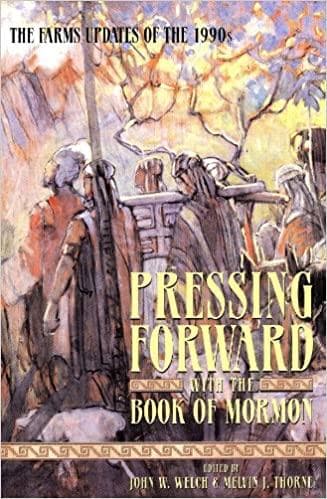Book
69 Chapters

“For the profit of thy people.” (2 Nephi 5:30)
To conclude our reflections on when, where, and why Nephi wrote his final small plates account, we can now turn attention to three political dimensions of those plates. Once again, the real-life situations of Nephi and his people supply important contexts that bring interesting things to light.
1. A post-fallout document. The small plates were clearly written after Nephi’s group left the land of first inheritance to escape the antagonisms of Laman and Lemuel and their sympathizers. The large plates probably contained expressions of great feelings of gratitude for the party’s deliverance from perils. Accordingly, because the large plates had been started immediately after the group’s arrival in the New World, that record may have been overly optimistic and conciliatory if not euphoric. There, in a spirit of hope and joy, Nephi may have given Laman and Lemuel credit at least for working on board ship (as all hands must have done) and for staying with the party (despite their desire to return to Jerusalem). Writing during something of a honeymoon period, Nephi may have expressed himself cautiously, uncritically, even hesitantly. The bold declarations of Nephi’s preeminence and Laman and Lemuel’s stiffneckedness later found in the small plates, however, would have offended Laman and Lemuel implacably and ruined any small chance of family harmony that existed upon the group’s arrival in the New World.
2. A selective, thematic presentation. As Noel B. Reynolds has shown, Nephi’s small plates served important political purposes for several centuries.1 Knowing that this account was written shortly after, if not as part of, Nephi’s coronation strengthens the thesis that this record was influenced by political needs from its inception. For example, the following incidents in 1 Nephi have clear political overtones: Nephi’s obtaining the plates of brass, being designated a ruler and a teacher over his brethren (1 Nephi 2:22), possessing the only usable bow in camp (leadership implications), supplanting “elder brethren” (1 Nephi 16:37), succeeding in building the ship when the others could not, refusing to be worshipped (1 Nephi 17:55), and being rejected as ruler (1 Nephi 18:10).
3. A separator of religious and political power. Finally, at the time he began writing the small plates, Nephi knew that a division of power should exist in his new city. Kings would rule in the palace, but priests would control the temple (2 Nephi 5:18, 26). If the kings held the only copy of the law, they could prevent the priests from carrying out their functions. So Nephi gave the large plates to the kings, for that record would contain “an account of the reign of the kings, and the wars and contentions” of the people; whereas the small plates, devoted to “the more part of the ministry” and for other divine purposes, were given to the priestly lineage of Jacob (1 Nephi 9:4). In addition, Nephi assured a balance between the royal and priestly leaders in his city by entrusting to the kings the brass plates (containing the temple laws of sacrifice that the priests would need) and entrusting to the priests the small plates (containing the narratives that were necessary to legitimize the kings).
Once again and from yet another dimension, we can appreciate the depth and value of the precious small plates of Nephi. In the end, Mormon included them in his final compilation of the Nephite records for a reason yet unknown to him (Words of Mormon 1:7), but in their own day these plates served many choice and crucial purposes for the immediate “profit” of the “people” of Nephi (2 Nephi 5:30).
Research by John W. Welch, originally published as a FARMS Update in Insights (May 1999): 2.
1. See Noel B. Reynolds, “The Political Dimension in Nephi’s Small Plates,” BYU Studies 27/4 (1987): 15–37.
Book
69 Chapters
Items in the BMC Archive are made publicly available for non-commercial, private use. Inclusion within the BMC Archive does not imply endorsement. Items do not represent the official views of The Church of Jesus Christ of Latter-day Saints or of Book of Mormon Central.